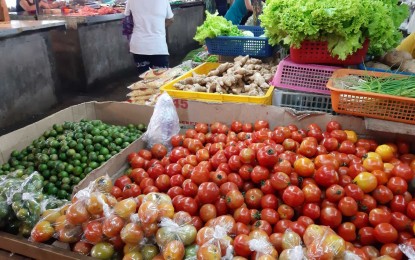
(File photo)
MANILA – Filipinos need not worry about big upticks in the prices of domestic goods as inflation is expected to stay within the government’s 2 to 4 percent target band until 2022.
“The balance of risks tilts toward the downside owing largely to potential disruptions to domestic and global economic activity of the ongoing pandemic,” Bangko Sentral ng Pilipinas Governor Benjamin Diokno said Friday.
Inflation is not seen to surpass the target band unlike what happened in 2018 when it surged to as high as 6.7 percent in September and October because of rice supply constraints, among others.
This is because the supply of basic commodities remains ample due to favorable weather conditions and lower demand on account of the pandemic.
After a two-month rise, rate of price increases made a turn-around last August at 2.4 percent.
Inflation registered its first rise this year in June after accelerating to 2.5 percent from May's 2.1 percent, which authorities attributed to upticks in the transport index, specifically tricycle fare index.
On the said month, transport index accelerated by 2.3 percent compared to the 5.6 percent annual decrease in the previous month.
This was traced to an increased need for tricycle service after the government-regulated public transportation in line with its quarantine measures aimed at addressing the rise of coronavirus disease (Covid-19).
Inflation rose further to 2.7 percent last July still due to the acceleration in the transport index, which posted a faster print of 6.3 percent from the revised 2.4 percent in the previous month.
Last August, inflation slowed because of the deceleration in the heavily-weighted food and non-alcoholic beverages index, which posted an annual rate of 1.8 percent from the previous month’s 2.4 percent.
Several indices also posted slower annual rates namely the alcoholic beverages and tobacco, 17.7 percent; clothing and footwear, 1.9 percent; furnishing, household, equipment, and routine maintenance of the house, 3.9 percent; education, 0.1 percent; and restaurant and miscellaneous goods and services, 2.3 percent.
Monetary officials said that because of the pandemic inflation is expected to remain benign, with average forecasts to be mostly at the lower half of the target band.
The average inflation forecast for this year is 2.5 percent while it is 3 percent and 3.1 percent for 2021 and 2022, respectively.
Acting Socioeconomic Planning Secretary Karl Kendrick Chua, in a statement Friday, said the unrestricted movement of food and other essential goods around the country, along with the impact of rice tariffication resulted positively for the domestic inflation rate.
“As we continuously implement varying levels of community quarantines and localized lockdowns in the country, we need the government and the private sector to tap local agricultural produce and maximize the use of digital technologies to ensure stability in the supply chain,” he said.
Chua said there is a need to effectively oversee the supply and allocation of agricultural products to guarantee adequate supply and address wastages and spoilage and limit farmers’ losses.
“Investments in cold storage facilities and innovations in food packaging and processing need to be increased as well, alongside the boosting of agricultural production, both in rural and urban areas, through the government’s Plant, Plant, Plant program,” he said.
Chua added that preventive preparations on production support, crop insurance and other recovery programs are needed to address possible losses and to immediately implement quick-response programs in disasters-prone areas, especially since La Niña is projected to hit the country late this month or in October.
Relatively, ING Bank Manila senior economist Nicholas Antonio Mapa said the slower inflation rate last August can be traced to the impact of the economic recession, with the domestic economy posting a 0.7 percent and 16.5 percent contraction in the first and second quarter of this year, respectively, due to the pandemic and the stronger peso.
He said reverting the National Capital Region (NCR), along with four nearby provinces, back to the stricter modified enhanced community quarantine (ECQ) from August 4 to 18 “may have slowed already hobbled demand further.”
“For the balance of the year, we expect inflation to remain at the lower-end of the BSP’s inflation target band given depressed economic activity with the stronger PHP (Philippine peso) also limiting imported inflation,” he said.
Mapa said that since inflation is seen to remain within target in the policy horizon and because Diokno has indicated the need to keep key rates steady “for at least two quarters” “we expect the BSP to keep policy levers untouched well into 2021.”
Also, ANZ Research, in a report, said inflation decelerated last August “presumably reflecting the impact of a reinstated lockdown during the first two weeks of the month.”
“We continue to expect price pressures to remain mild and not present any challenge to monetary policy. At the same time, sufficient liquidity in the financial system and incomplete transmission of previous cuts in the policy rate do not make a case for further easing at this stage,” it added. (PNA)
